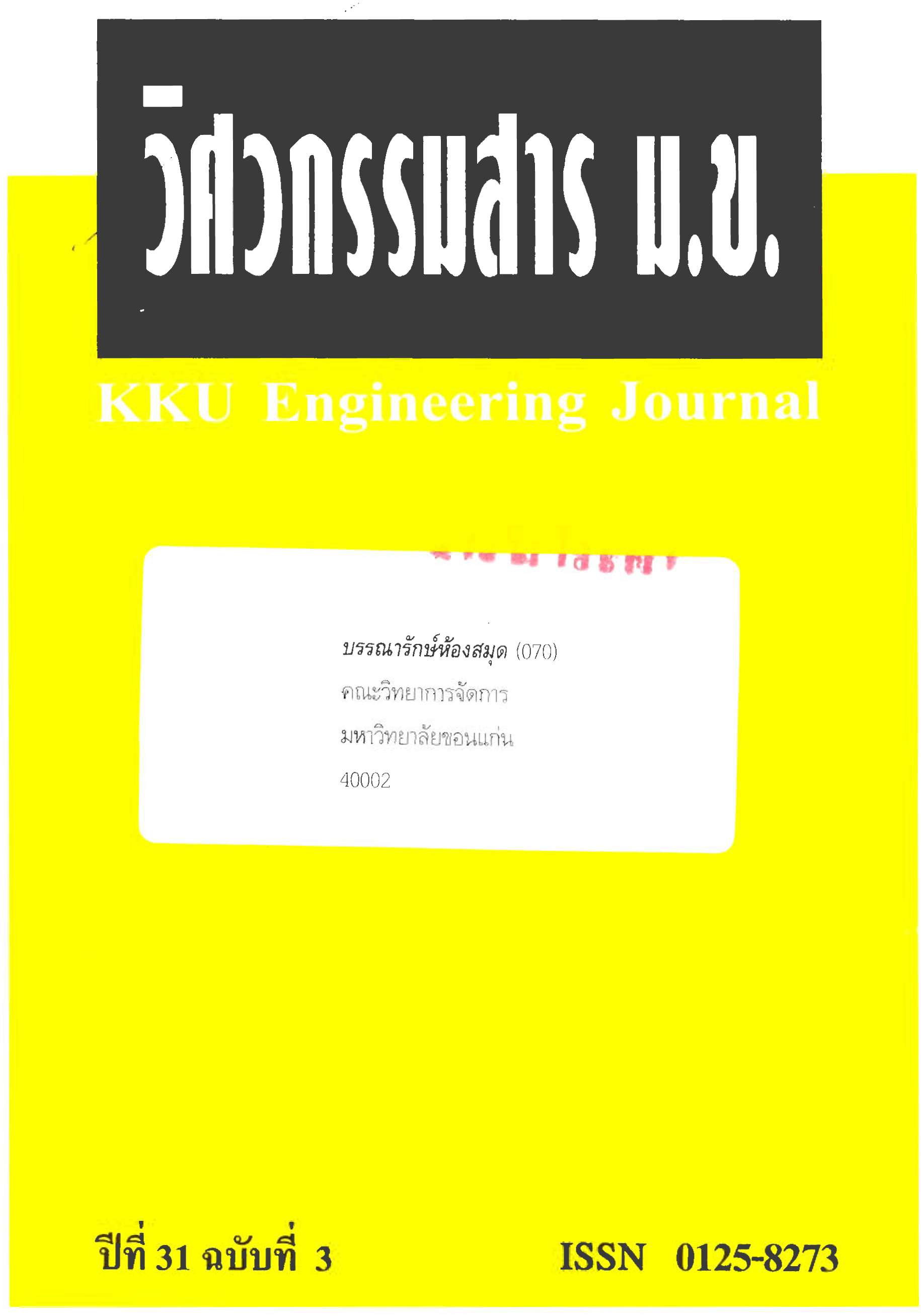Cryogenics Baby Corn Freezer by Liquid Carbon-dioxide
Main Article Content
Abstract
Cryogenics freezing by liquid carbon-dioxide (co2) is a freezing method in which liquid CO2 (Boiling point = -78.5ºC at 1 atm) is sprayed on a product and is able to freeze the product in a short time. This research is to design and construet a freezer using cryogenic process. The tunnel was a 0.5 m x 0.45 m rectangular duct and 1.2 mm length and insulated by foam-like material of 0.1 m thickness Baby corns used as a frozen product, were fed continuously by mesh conveyer and laid evenly on the floor in one slab without overlapping Liquid CO2 was sprayed over the baby corns from four nozzles above then at 0.12 m in height. The nozzle have 1 mm in diameter. In a short time, this eryogenic freezer could reduce the baby corn’s temperature less or equal 10-18ºC at which microorganism could not grow under this condition In general, a quick freezing method will change the characteristies of the product less than slow freezing method For this research, after thawing process, the baby corn’s color frozen by slow freezing method was darker than those frozen by cryogenic freezing. The freezing times of size S.M.L. calculated by Plank’s equation were 173,198,270 seconds respectively and those measured from the experiments were 205,235,295 seconds respectively. Consequently the Plank’s equation can be used to predict the freezing time of the baby corns. This study is , however. In an initial state of debelopment. It only aims to design and construct the prototype machine. Further study is required for the study and development of spraying system and nozzle. During this experimental study, it was found that large amount of liquid CO2 is lost to the surroundings due to liquid CO2 oversupply which was uncontrollable by the current prototyping machine resulting this research uneconomic. As a result, the spraying control system is needed to be systematically designed in order to supply suitable amount of liquid CO2 to the products
Article Details
This work is licensed under a Creative Commons Attribution-NonCommercial-NoDerivatives 4.0 International License.



